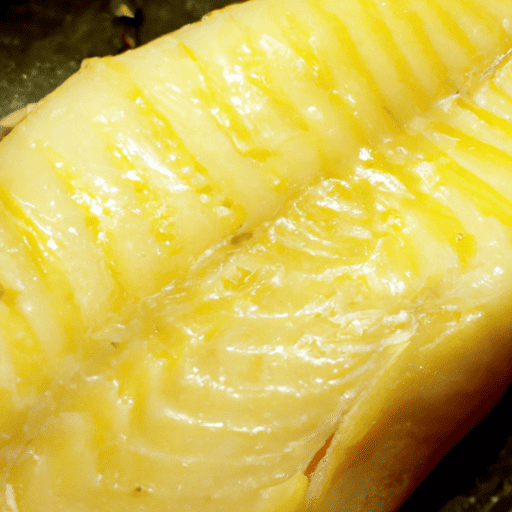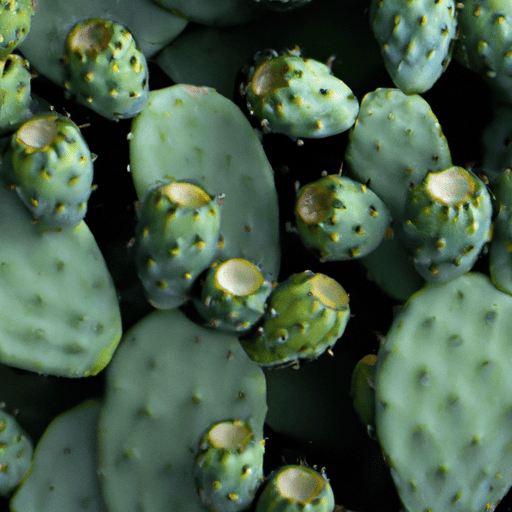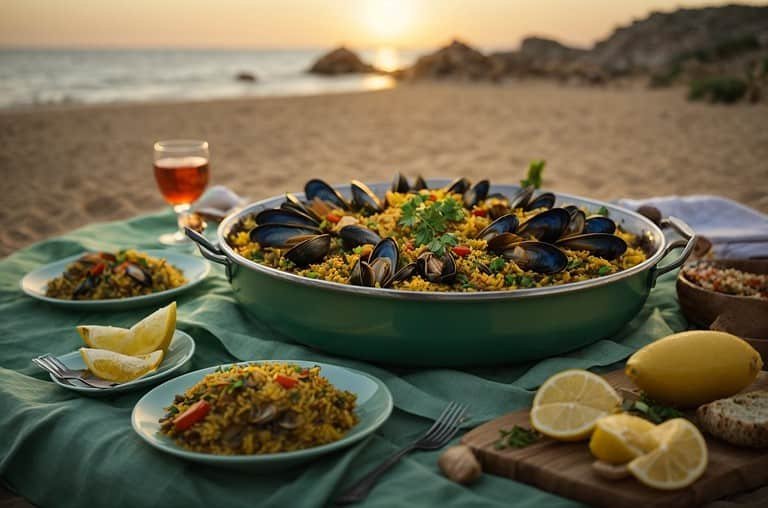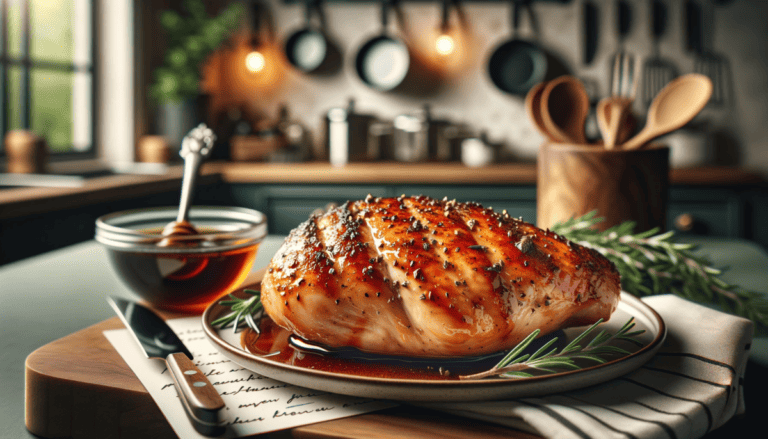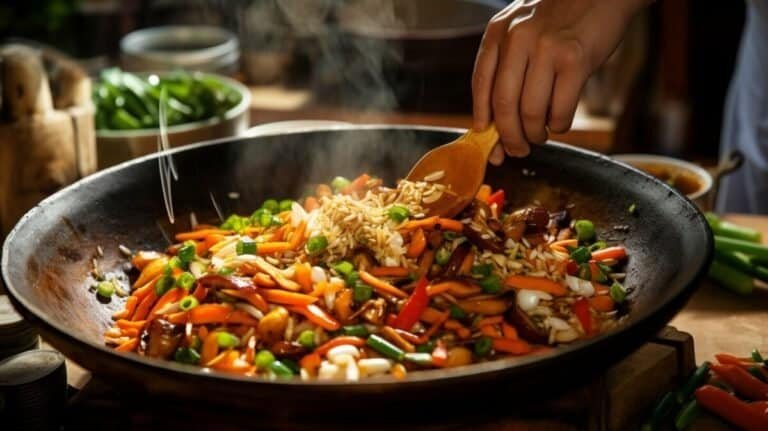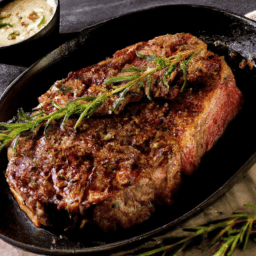How To Cook Yellowtail
Are you looking to learn how to cook yellowtail? Look no further! In this article, we will guide you through the steps to prepare this delicious fish, from seasoning to cooking techniques. Whether you’re a seafood enthusiast or just experimenting with new recipes, this guide will help you create a mouthwatering dish that will impress your family and friends. So grab your apron and let’s get started on the flavorful journey of cooking yellowtail!
Understanding Yellowtail
Yellowtail is a type of fish, also known as amberjack, that is widely used in cuisines around the world. It is a popular choice for seafood lovers due to its rich flavor and firm, meaty texture. Yellowtail is often found in warm waters and can be easily recognized by its yellowish coloring, which gives it its name. In this article, we will explore the definition and description of yellowtail, its health benefits, as well as how to select and prepare it for various cooking methods.
Definition and Description of Yellowtail
Yellowtail, or amberjack, is a species of fish belonging to the Carangidae family. It is known for its vibrant yellow color and can grow to be quite large, with adults reaching lengths of up to six feet. The flesh of yellowtail is firm, lean, and has a mild flavor with a hint of sweetness. It is prized for its versatility in cooking, as it can be prepared in various ways, including grilling, baking, frying, steaming, and even as sushi.
Health Benefits of Yellowtail
Yellowtail is not only delicious but also offers several health benefits. It is a great source of lean protein, making it an excellent choice for those looking to maintain or build muscle. Additionally, yellowtail is rich in omega-3 fatty acids, which are essential for heart health and brain function. These fatty acids also possess anti-inflammatory properties, which can help reduce the risk of chronic diseases such as arthritis and heart disease. Furthermore, yellowtail contains vitamins B6 and B12, which are important for boosting energy levels and supporting a healthy nervous system.
Availability and Selection of Yellowtail
Yellowtail is available year-round in many seafood markets and grocery stores. When selecting yellowtail, look for fish that has clear, bright eyes and shiny skin. The flesh should be firm to the touch and have a fresh, sea-like scent. If purchasing whole yellowtail, the gills should be bright red, indicating freshness. Alternatively, you can choose to buy yellowtail fillets, which are readily available and can save you the hassle of cleaning and filleting the fish yourself.
Preparation Before Cooking
Before cooking yellowtail, it is crucial to ensure that you have all the necessary items for preparation. These include a sharp filleting knife, cutting board, paper towels, and a container for marinating the fish. It is also essential to have the right ingredients for seasoning, such as salt, pepper, herbs, and spices. Having these items ready will make the process much easier and more efficient.
Cleaning and Filleting Yellowtail
To clean and fillet yellowtail, start by rinsing the fish under cold water to remove any loose scales or debris. Then, use a sharp filleting knife to make an incision just behind the gills and continue cutting along the belly towards the tail. Carefully remove the skin by sliding the knife between the flesh and the skin, using a gentle sawing motion. Next, remove the head and entrails, and rinse the fish again to ensure it is clean. Finally, cut the yellowtail into fillets of your desired size.
Marinating and Seasoning Techniques for Yellowtail
Marinating yellowtail can enhance its flavor and make it even more delicious. To marinate yellowtail, prepare a mixture of your choice, such as lemon juice, soy sauce, garlic, and herbs. Place the yellowtail fillets in a container and pour the marinade over them, ensuring that all sides are coated. Let the fish marinate in the refrigerator for at least 30 minutes to allow the flavors to infuse. Before grilling, baking, frying, or steaming the yellowtail, be sure to season it with salt and pepper or any other desired spices to enhance its taste.
Grilling Yellowtail
Grilling is a popular cooking method for yellowtail, as it brings out the natural flavors of the fish while giving it a delicious smoky char. Before grilling yellowtail, it is important to properly set up the grill. Make sure the grill grates are clean and preheat the grill to medium-high heat. This will ensure that the fish cooks evenly and doesn’t stick to the grates. Brush the yellowtail fillets with oil to prevent them from drying out and place them on the grill, skin side down. Cook for about 4-6 minutes per side, depending on the thickness of the fillets. Yellowtail is cooked when it is opaque and easily flakes with a fork.
Baking Yellowtail
Baking yellowtail is a simple and healthy way to cook this delicious fish. To bake yellowtail, preheat your oven to 400°F (200°C) and lightly grease a baking dish or line it with parchment paper. Place the seasoned yellowtail fillets in the dish and bake for about 10-15 minutes, depending on the thickness of the fillets. The fish is cooked when it easily flakes with a fork and has an internal temperature of 145°F (63°C). Baking allows the yellowtail to retain its moisture and flavor, resulting in a tender and succulent dish.
Frying Yellowtail
Frying yellowtail is a popular method, particularly in Asian cuisines. To fry yellowtail, start by heating oil in a frying pan or deep fryer to around 350°F (175°C). While the oil is heating, coat the yellowtail fillets in a light batter or dredge them in flour for a crispy texture. Gently place the fillets into the hot oil, being careful not to overcrowd the pan. Fry for about 3-4 minutes per side or until the fish is golden brown and crispy. Remove the yellowtail from the oil and place it on a paper towel-lined plate to drain excess oil before serving.
Steaming Yellowtail
Steaming is a gentle cooking method that preserves the delicate flavors and textures of yellowtail. To steam yellowtail, start by bringing water to a boil in a steamer or a large pot with a steaming rack. Place the seasoned yellowtail fillets on the rack, ensuring that there is space between them for the steam to circulate. Cover the pot or steamer with a lid and steam for approximately 8-10 minutes, depending on the thickness of the fillets. The fish is cooked when it becomes opaque and easily flakes with a fork. Steamed yellowtail is light and moist, making it a healthy and nutritious option.
Sushi-style Yellowtail
Yellowtail is a popular choice for sushi, as it has a firm texture and a mild, slightly sweet flavor. To prepare yellowtail for sushi, start by rinsing the fillets under cold water, then pat them dry with a paper towel. Prepare sushi rice according to your preferred method and let it cool slightly. Cut the yellowtail into thin, bite-sized pieces, and set them aside. To assemble the sushi, take a small handful of sushi rice and shape it into a rectangle using moistened hands. Place a piece of yellowtail on top of the rice and gently press it to adhere. Repeat with the remaining rice and yellowtail. Serve the sushi with soy sauce, wasabi, and pickled ginger for a delicious sushi experience.
Serving Suggestions for Yellowtail
Yellowtail pairs well with a variety of sides, enhancing the overall dining experience. Some perfect sides for yellowtail dishes include steamed vegetables, such as broccoli or asparagus, which add a nice contrast to the rich flavors of the fish. Additionally, a refreshing salad with mixed greens, cherry tomatoes, and a citrus-based dressing can complement the flavors of yellowtail. For a heartier meal, consider serving yellowtail with roasted potatoes or a wild rice pilaf. These accompaniments will elevate the dish and provide a balanced and satisfying meal.
Storing and Reheating Yellowtail
If you have any leftover yellowtail, it is important to store it properly to maintain its quality and freshness. Place the cooked yellowtail in an airtight container and store it in the refrigerator for up to 3 days. When reheating yellowtail, it is best to use gentle methods to prevent overcooking or drying out the fish. For grilled or baked yellowtail, lightly brush the fillets with oil and heat them in a preheated oven at 350°F (175°C) for about 5-10 minutes, or until heated through. For fried yellowtail, reheat it in a pan over medium heat until warm. Steamed yellowtail can be reheated by steaming it for a few minutes until heated. Check for doneness before serving.
Common Mistakes While Cooking Yellowtail
Like any other culinary endeavor, cooking yellowtail can come with its own set of challenges. However, with a little knowledge and practice, these common mistakes can be easily avoided. One common misstep is overcooking the yellowtail, which can result in a dry and tough texture. It is important to monitor the cooking time and avoid leaving the fish on the heat for too long. Another mistake is not properly seasoning the fish, which can lead to a bland final dish. Be sure to season yellowtail adequately with salt, pepper, and other desired spices to enhance its flavors. Finally, using the wrong cooking method for yellowtail, such as grilling when it should be steamed, can also yield disappointing results. Choosing the right cooking method for yellowtail will help preserve its delicate qualities and ensure a delicious meal.
Tips for Perfecting Your Yellowtail Dish
To perfect your yellowtail dish, consider the following tips and techniques:
- Choose the freshest yellowtail available for the best flavor and texture.
- Experiment with different marinades and seasonings to find your favorite flavor combinations.
- When grilling yellowtail, ensure that the grill grates are well-oiled to prevent sticking.
- For baking or frying yellowtail, avoid overcrowding the pan or baking dish to ensure even cooking.
- When steaming yellowtail, be cautious not to overcook it, as it can become mushy.
- Use a meat thermometer to check the internal temperature when baking or grilling to ensure the fish is cooked properly.
- Take the time to properly clean and fillet the yellowtail for the best results.
- Be mindful of the cooking time and temperature to avoid undercooking or overcooking the yellowtail.
- Don’t be afraid to get creative with your presentations, garnishments, and sides to elevate the overall dining experience.
By following these tips and techniques, you can create a delicious and memorable yellowtail dish that will impress your friends and family.
In conclusion, yellowtail is a versatile and flavorful fish that can be prepared in various ways to suit different tastes and cuisines. Whether you choose to grill, bake, fry, steam, or enjoy it sushi-style, yellowtail offers a delightful culinary experience. With the right preparation and cooking techniques, you can create a dish that showcases the natural flavors and textures of this remarkable fish. So, don’t hesitate to try your hand at cooking yellowtail and discover the joy of preparing and savoring this delicious seafood delicacy.

